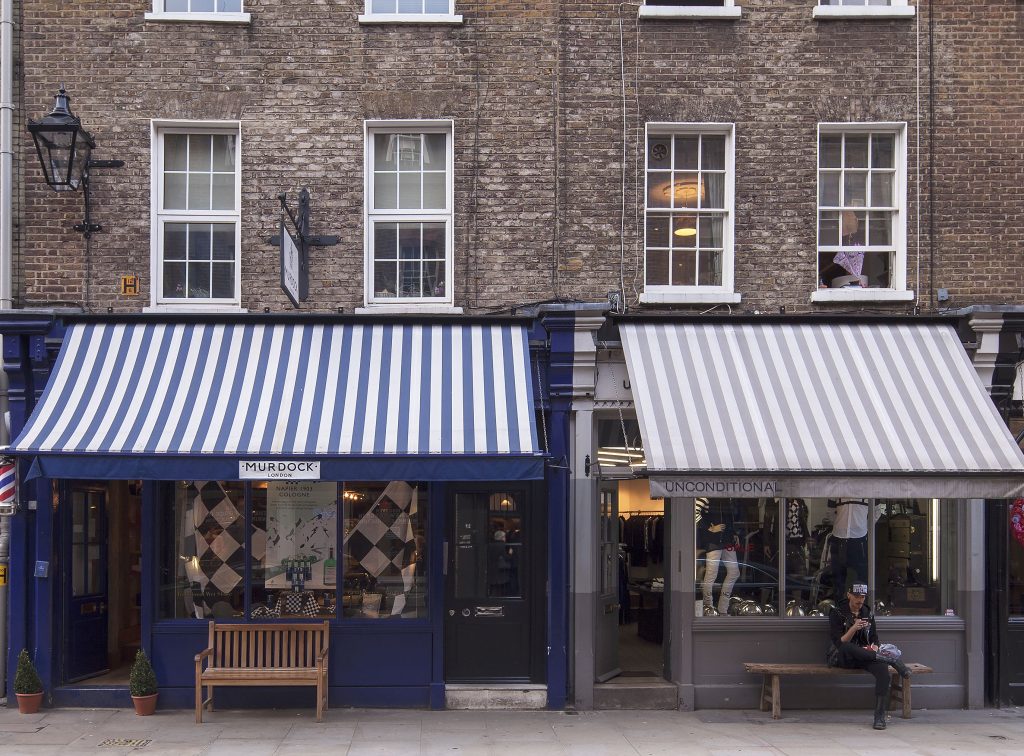Blinds are an established feature in shopping streets, particularly on shops selling perishable goods or delicate materials that deteriorate in sunlight.
For over a hundred years, traditional blinds, in the form of a straight canvas awning or roller blind, were added to buildings in a way which did not affect their individual character or that of the overall street scene. In recent years, the introduction of Dutch blinds and ‘blister’ blinds (curved in three dimensions) has had an adverse effect on the character of many shopping streets, particularly where blinds are used primarily as an advertisement rather than as a means of providing shade or shelter.
Traditionally, shop blinds were of white canvas, sometimes with the name of the shop inscribed in decorative lettering, or of green, blue, or red and white stripes like deckchair material. In general, plastic Dutch blinds should be avoided and traditional canvas-finish roller blinds used. The roller box should be fitted neatly into the top of the fascia cornice so as to be relatively unnoticeable when the blind is retracted.
All blinds should be designed and installed to ensure public safety; incorporate a minimum of 2.3m clearance between the bottom of the blind edge (or valance where fitted) and the pavement; and incorporate a minimum of 1m clearance between the blind and the kerb edge. Planning permission is required for the installation of blinds and Listed Building Consent in the case of listed buildings.
